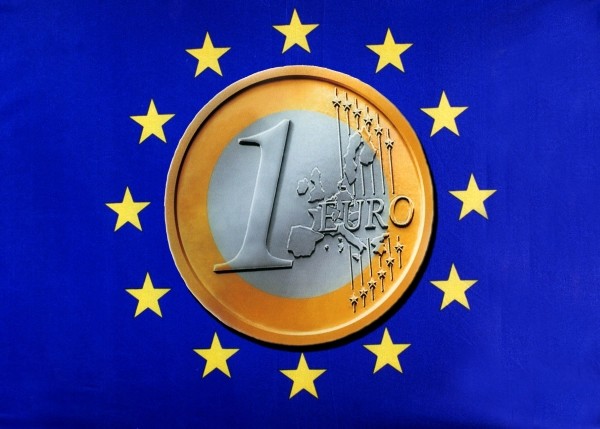
Euro to Dollar Rate Below 1.10 on Weak German Inflation and Strong US GDP Data
The EUR to USD conversion has been flirting with a break below 1.10 for days now; this has finally happened as we head through the final session of the week.

The euro has fallen below a key support zone on news that German inflation grew at a less-than-impressive rate and US GDP data confirmed in convincing fashion that the US economy is growing at a steady clip.
"We have been highlighting the 1.1080-1.1150 region as resistance, which if European inflation data continues to come out on the weak side, is likely to cap the upside and see this rate re-test the 1.0930 support. A break there would open a move towards the 1.06-1.0450 range lows," says Robin Wilkin at Lloyds Bank.
Medium term, only a rally back through 1.1375/1.1430 would negate our current bias for a move back to the range lows suggests the analyst.
CPI for January read at 0.4%, below analyst forecasts, giving the ECB yet another reason to act aggressively at their keenly anticipated March meeting.
The ECB is desperate to boost prices in the Eurozone and markets will likely shy away from the euro in anticipation of aggressive action.
The surprising negative print for CPI in the bloc’s largest economy was accompanied by news that CPI in France and Spain fell to -0.1% and -0.9%(y/y) respectively this month.
"All of this bodes poorly for the broader euro zone CPI figures due out next week, and fuels expectations that the ECB will have to act aggressively to counter mounting deflationary pressures when it meets on March 10th," says a note on the matter from Commonwealth Foreign Exchange.
Meanwhile economic growth in the US beat expectations handsomely with GDP reading at 1% in the final quarter of 2015, well ahead of forecasts for 0.4%.
Those who sold the US dollar on fears the US was heading for recession simply look foolish while the US Federal Reserve can continue on their path of raising interest rates.
A Tough Week for the Euro Gets Worse
The euro has suffered somewhat this week with markets sending the shared currency lower as they realise a UK exit from the Eurozone also poses longer-term risks to the euro.
Technically, the EUR to USD pair was captured in a sideways range between 1.0990 and 1.1045 with focus falling on the ability of the 1.10-1.1045 region’s ability to halt the declines.
The placement of buy orders by traders at this technical level, because they think everyone else is doing it, ensures that 1.10 has stood firm.
However when such a level breaks those aborted trades effectively spill more euros onto the market and accelerate the move lower in the process.
Market Sentiment Matters for the Euro
One of the two factors that will no doubt keep the euro under pressure moving forward is sentiment on stock markets.
The euro tends to benefit when markets are stressed, and struggle when markets are buoyant.
“The continued rally in U.S. equities and the improvement in risk appetite kept EUR/USD under pressure. Historically euro is a high beta risk currency, which means that it rallies when investors are optimistic but that changed with negative interest rates,” says Kathy Lien, Director at BK Asset Management.
Lien notes the ECB turned the risk currency into a funding currency that rises when stocks fall and vice versa.
Talking of the ECB, we are fast approaching the March meeting, which as we note here, promises to show the central bank flexing some muscle.
"The ECB cannot afford a repeat of disappointing the market as it did at its December 2015 meeting," says a note from Handelsbanken, the Swedish investment bank.
The bank’s macro team pointed out that the euro had not depreciated at all since the inception of the latest easing programme in October 2014:
"Since the ECB started its asset purchase programme in October 2014, the trade-weighted EUR is flat."
They go on to explain that they expect a robust response at the next March 10 meeting:
"We believe the ECB will expand monetary stimulus on March 10."
According to the note markets are currently pricing in only an average 12 basis point cut in the deposit rate, which currently stands at -0.30 – which would reduce it to -0.42%.
If the ECB does surprise markets with what are deemed effective policy measures, then the euro exchange rate complex will come under pressure and we could well see a break into the 1.00-1.10 region by the EUR/USD.
PS: Copy signals and Earn on https://www.share4you.com/en/?affid=0fd9105 ( If the trader then sell signals)


